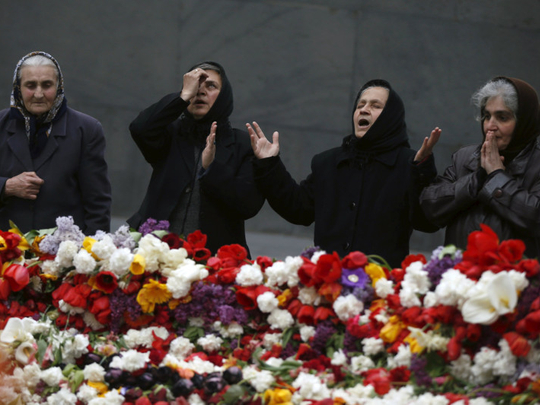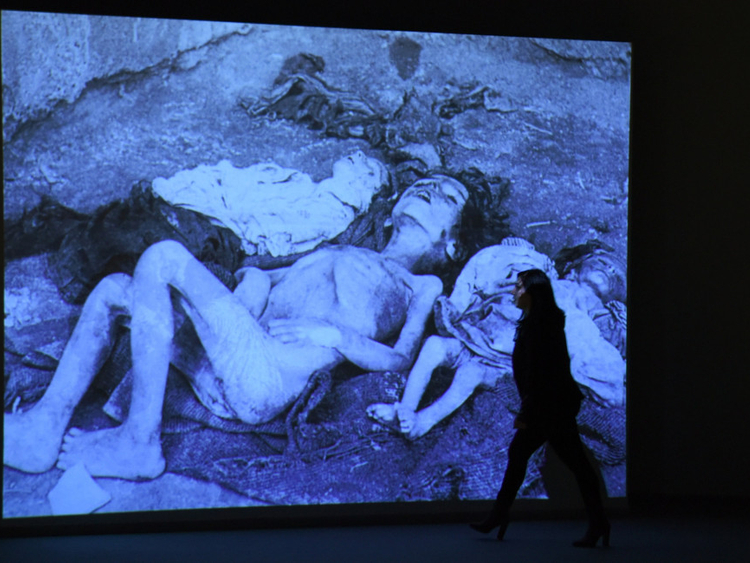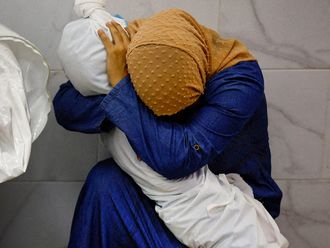
Yerevan: The collapse of the Ottoman Empire on October 31, 1918 translated in an allied victory as Britain controlled Syria, Palestine and Mesopotamia (Iraq), while British units, along with French and Greek forces prepared to march across the Bulgarian border to occupy Ottoman Thrace and Constantinople [that became Istanbul in 1930]. Mehmed VI, a weakly Sultan, feared the worst, though it was not long before the Young Turk government was overtaken by Mustafa Kemal, later Ataturk, or the father of the Turks.
Young Turks, led by Enver, Cemal and Talât pashas, three men who sought sanctuary in Germany in 1918, were responsible for the destruction of the empire, with simmering ethnic and religious tensions throughout the realm. Violence was added to large numbers of army deserters, most of whom turned to banditry, though most of it occurred in the relatively isolated areas of Anatolia away from prying allied eyes. Historians have long debated why allied powers, led by the US, Britain and Russia, wished to impose peace terms that granted Kurds and Armenians independence though it was that prospect which horrified Turks for whom Anatolia became a second heartland.
Enver Pasha, the minister of war whose starvation policies also wiped out half of Mount Lebanon’s population between 1915 and 1918, believed in pan-Turanism, which meant the domination of the Turkish nation over all minorities, even if in reality minorities within the empire — including Arabs, Armenians, Greeks, Jews, Kurds and many others — formed the majority. As the power of minority nations expanded, nevertheless, the economic welfare of the Turkish elite was threatened, which led to a series of political reforms ostensibly to grant equal rights to all subjects. Starting 1839 and until the promulgation of a new constitution in 1876, the Ottoman government instituted the Tanzimat reforms that were designed to improve the status of minorities. Still, the principle of equality was deemed unacceptable to an increasingly nationalist Turkish population that perceived Western interference in its internal affairs and, equally importantly, that associated the fate that befell Turks living in the Balkans — who genuinely suffered under European hands with the destinies of non-Muslim subjects.
Ironically, Armenians were by and large passive throughout this period, earning them the title of millet-i sadika or the ‘loyal millet’, though neither their loyalty to the Sultan nor their incredible contributions to the welfare of the empire were perceived in positive terms. On the contrary, their passivity identified them as ideal victims, with a challenged Sultan Abdul Hamid II (1842-1908) unleashing his wrath on loyal subjects to spite European powers.
In 1890, Abdul Hamid created a paramilitary militia known as the Hamidiye, mostly made up of Kurdish irregulars who were tasked to “deal with the Armenians as they wished” and that led to the first massacres that cost the lives of 200,000 — to 300,000 Armenians between 1894 and 1896. After the July 1908 coup d’état that removed Abdul Hamid II from power and restored the country to a constitutional monarchy under the Young Turk movement, Armenians mistakenly assumed that past horrors would never be repeated though growing Armenian nationalism — ironically allied with the Young Turks — led to the creation of a secret Turkish revolutionary organisation called the Committee of Union and Progress (CUP), whose ranks were filled by military officers. Abdul Hamid stepped down under pressure though Young Turk elements organised a countercoup in early 1909, whose supporters allegedly aimed to return control of the country to the Sultan. Riots and fighting broke out between the reactionary militias and CUP forces that proved unable to stop pogroms against Armenians in Adana. The number of Armenians killed in the course of the Adana Massacres ranged between 15,000 and 30,000 people, most of whom fell to military units unleashed on a defenceless population that supported constitutional reforms.
What eventually led to the full-fledged Armenian genocide of 1915, which successive Turkish governments denied, were the 1912-1914 Balkan Wars that mowed the Ottoman Empire and led to the loss of 85 per cent of its European territories.
Dejected, Turkish nationalists increasingly viewed Anatolia, where the Armenian nation lived for millennia, as their last refuge, and perceived Armenians as an existential threat. Talaat, Enver and Cemel pashas, along with a slew of senior officials, calculated how best to subjugate local populations, which was the chief reason why Muslims expelled from the Balkans were resettled there to alter local demographics. Already downtrodden, these poor refugees were mobilised to turn against communities that welcomed them, in the name of revenge, even if the fate that befell Turks in the Balkans were not of their doing. As the Turkish historian Taner Akcam painstakingly documented, these refugees (muhacirs) “resented the status of their relatively well-off neighbours and played a pivotal role in the killings of the Armenians and the confiscation of their properties during the genocide that followed with the start of World War I.
Inasmuch as Constantinople sided with the Axis against Western powers, it was not long before Ottoman authorities orchestrated a propaganda campaign to present Armenians as a threat to the empire’s security, even if most were loyal subjects.
On the night of April 23-24, 1915, an estimated 250 Armenian intellectuals and leaders were arrested in the capital, most of whom were eventually executed. Within a month, Talaat Pasha requested and received a cabinet order to deport Armenians from their national homeland, as a long trek led to the Syrian Desert and beyond. Despite denials, the CUP Central Committee passed the Tehcir Law [Temporary Law of Deportation] on May 29, 1915, that gave authorities the right to banish anyone it concluded was a threat to national security.
An estimated 1.5 million Armenians perished in the massacres and forced marches that followed, though hundreds of thousands made it to Deir Al Zor, Qamishli, Hassake, Aleppo, Damascus, and all the way to Jerusalem. Arab Muslim families welcomed these survivors into their homes even if the entire Middle East was then under colonial rule with little sympathy for others. Yet, Arab Muslims saved Armenians from annihilation, which is the chief reason why so many call various Middle Eastern countries home.
The once mighty Ottoman Empire was gone and though Kemal Pasha concluded that the Turkish people needed a homeland of their own, he and his supporters engaged in an armed struggle against allied forces determined to disarm Turks. Local Turkish civilian militias and political alliances between nationalist groups, coupled with eternal squabbling among Allies delayed the signing of the peace treaty negotiated at Sèvres in France. By the time the treaty was signed on August 10, 1920, Ataturk had consolidated his forces, riding a strong wave of Turkish nationalism. Turkey was formally born in 1923 though undeniably on Armenian ashes.
By the time the Treaty of Sèvres was signed on August 10, 1920, Ataturk had consolidated his forces, riding a strong wave of Turkish nationalism. Turkey was formally born in 1923 though undeniably on Armenian ashes.













